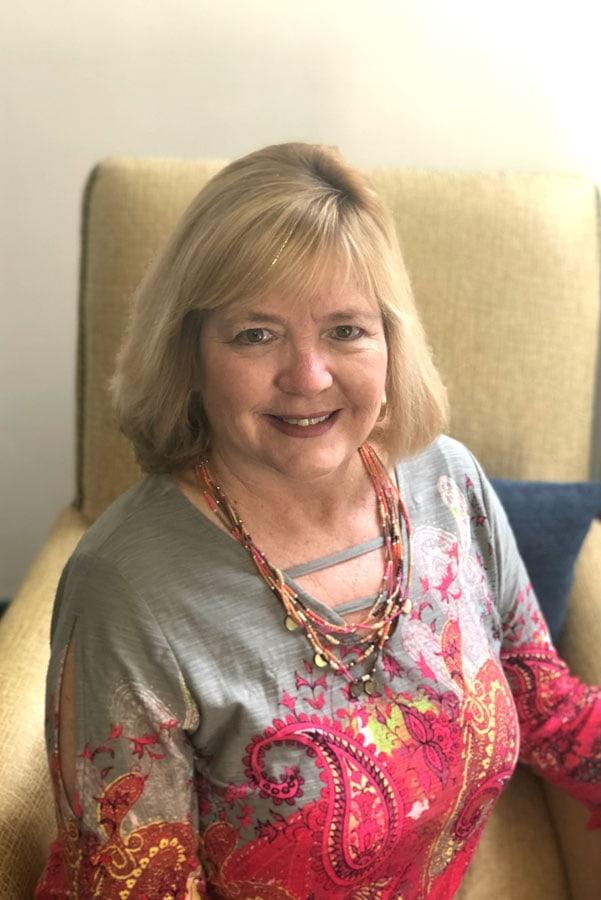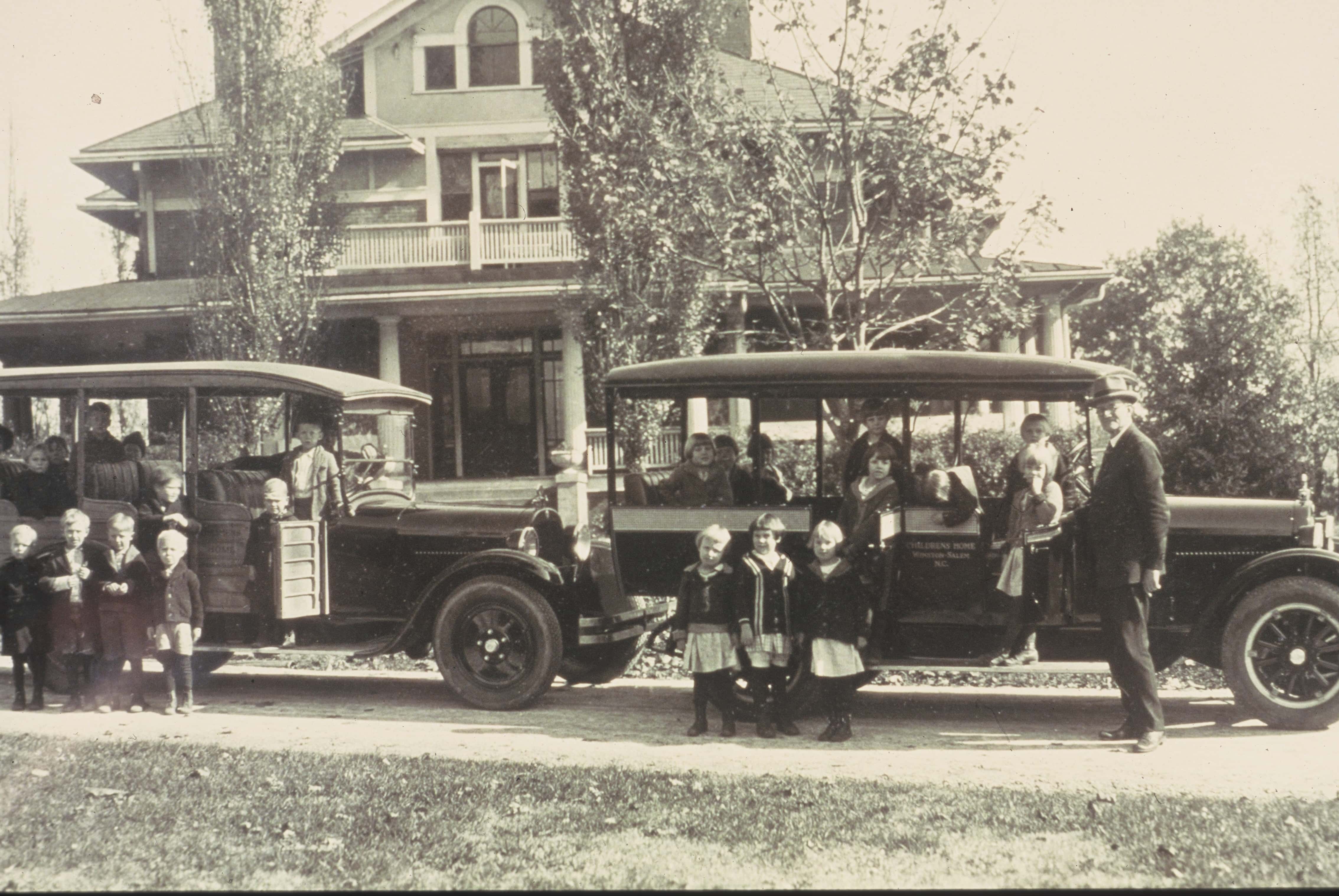We had the opportunity to interview Kimberly King about the history of The Children’s Home. Kim started working with The Children’s Home (TCH) in 1983. She now serves as Fostering Communities Officer on our Winston-Salem campus. This year, Kim celebrates her 39th anniversary with Crossnore. Kim loves to tell stories about her time at TCH, as well as her work here since the merger with Crossnore.
How did you find out about The Children’s Home? What brought you here?

Growing up, I spent my childhood summers working with my family at Horn in the West in Boone. As a young adult, I decided to move to North Carolina from Pennsylvania and began looking for work in the mountains and in the Piedmont. I was most interested in becoming a Juvenile Court Counselor, but found out the job required more experience working with children.
After driving by the campus many times over a few days while visiting with some of my extended family who lived in Winston, I decided to just drive up on the campus. Surely I could find some opportunities here to work with children. The Children’s Home closed for two weeks each year and all the kids were all away, a tradition I learned more about later. I met the program director who was a kind, sweet man. I applied for a job as a Residential Counselor, but the program director said I wouldn’t get hired because I was much too young. But just a few days later, I was hired as a Residential Counselor for the Transitional program.
In this first position at TCH, I worked in Norfleet Cottage which was the older teen girls’ cottage. My job was to help the girls learn independent living skills as they worked their way up the level system. I remember my first night lying in a strange bed, in a strange room in a strange place, surrounded by nobody that I knew. I remember thinking, what have I done? To this day, that memory is triggered when I see a child moving into one of the cottages. Imagine what he or she is thinking, being separated from everybody and everything that is familiar.
What services were provided at that time?
At that time, TCH offered Residential care only. Most placements usually lasted for many years except for children placed in the Emergency program, which was housed in Stockton and Reynolds cottages. Some of the children in the emergency program eventually moved into long term care.

Were the children in foster care or truly orphaned? Or was it a combination?
All the children were placed here by the Department of Social Services (DSS) and pretty much all of them had at least one parent. A few years later, we had one actual orphan with whom I still stay in contact.
How many cottages were there and how many children were served at TCH in the 1980s?
There were 10 cottages open with 98 kids in care. Typically, if there was a bed available, it was filled quickly. Most of the male cottages were closer to the north end of campus and the female cottages were closer to the south end of campus with the youngest children living in Stultz Cottage.
What was the format of shifts for Cottage Parents?
When I first arrived, the schedule for the staff in most cottages was 6 days on and 3 days off. A cook worked in each cottage. But for the Transitional program where I worked, there was only one Residential Counselor on shift at a time. A cook did not work in this program because each resident helped cook dinner once a week. The Transitional program had a budget and we did all our shopping off campus. The girls also shopped with me, so we drove to the grocery store a lot. And, at night when everyone was asleep, I read my Betty Crocker Cookbook a lot!
What was the community like then and has it changed in these years?
In 1983 the campus had a very strong community feel to it. The campus minister lived in a staff house with his family. The church had community members who attended church and Sunday school with us each week. A lot of staff and their families lived in the staff housing and many had lived there a long time. Several staff that lived on campus had also grown up at The Children’s Home. It was important to get to know them and to follow their lead.
The big hangouts in the summertime were the rec, the pavilion for basketball, and the giant pool. A couple of the older kids served as certified lifeguards. There were ball games in the field three or four nights a week and TCH boys had a team in the church basketball league. Our boys played well but their language causes more penalties than any of our opposing teams!
In 1983 everybody went to school off campus except for the kids in the Emergency program. To this day, alumni will complain about walking up that hill, back and forth to Reynolds High School, like they just did it this morning. Our school liaisons worked hard! I cannot understand how they kept up with every child and their educational needs.
We also had an old, unpredictable school bus used for transporting groups, but most of the activities were on campus except for the teens in the transitional program. Each of these teens worked at an off-campus job and they enjoyed additional freedom as they moved up the level system. The Children’s Home had very few cars; I can only remember three. The Transitional program shared a lovely 5-passenger Citation. I taught many girls how to drive that Citation or the scary Ford Granada.
After receiving their driver’s license, some teens were approved to take other children to a doctor’s appointment, or run errands, etc. The Transitional residents could also sign out the car for dates and outings when they reached the highest level. One more level 4 perk: a resident got a key to the cottage. Ironically they really didn’t take advantage of the freedoms they had on the higher levels. On another note, the ONE rotary phone caused the biggest disagreements among eight teen girls living together!
What stands out most about the agency in 1983 was the strong sense of community and the rituals. There were no sibling cottages and everyone knew that every few years they would age out of their cottage and move to the next one. Moving up became a rite of passage. Siblings hung out with each other at the rec or ball field but the residents in their cottages were folks with whom they identified.
What challenges have you seen overcome here?
I have watched the agency change with the needs of the community for the last 39 years. Change is necessary but it isn’t always easy. When we first became a Mental Health agency, the transition was difficult. The kids’ needs were different. Staff training was different. It was challenging to learn to relate to the children in a different way, practically overnight. We did overcome it and we were able to serve kids who really needed a place to live and thrive.
Also, before the merger with Crossnore, funding sources changed again, leadership changed, and we experienced losses with closed programs. When we began working with Crossnore leadership, they wanted to hear about our history, our stories, and our successes. Today Crossnore Communities for Children continues the work started in 1909 on these beautiful 212 acres. And every child and family we work with are blessed by what we’ve learned, how we’ve changed, and what we can offer today.
What do you hope people take away from a visit to Crossnore?
When I give a tour or work with a volunteer group, I talk about our programs in detail. But more importantly, I share stories to help them understand this work. I will never forget one Halloween when 5-year old Travis said, “Ms. Kim, this is the best day of my whole life.” The kids we serve have missed out on so much. I want people to know we are providing a safe and dependable home for every child while they are in our care so they can experience joy from being a kid and creating childhood memories.
Why should people support the work at Crossnore?
I know that spending time with the children is most rewarding, but in order to provide a place for children to thrive, we need financial support. Also, with many children going into our community foster homes, we also need churches and civic groups to consider supporting our community foster families. Every group has its own set of unique strengths from yard work to house repairs to meal delivery. The work of supporting a family caring for a child who has experienced trauma is very rewarding and much appreciated!
Why have you stayed all these years?
I stay for the kids. I feel my work makes a difference, but I am always looking for ways to improve or do more.




